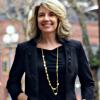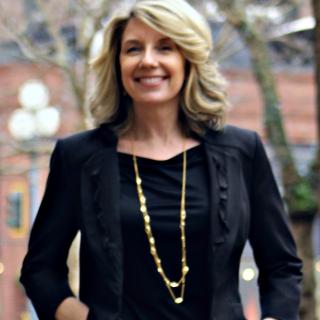 There is no middle ground to 2 + 2 = 4.
There is no middle ground to 2 + 2 = 4.
If there were a subject that was free of controversy, it would be math, right?
To the contrary, the frustrations of some parents and educators in schools around Washington over how math is taught here have reverberated their way back to Olympia. Furthermore, a report commissioned by Washington’s Board of Education states, “Compared to other higher-achieving states and countries, Washington is not expecting enough of its students.”
The report, delivered to the Washington State Board of Education in 2007, states that students in our state are not learning the math rules they need to succeed. “Some key math is simply missing,” it says.
To comprehend what is going on here, let’s look at what’s being taught in our elementary school classrooms.
Most public and private schools teach some form of “reform math” curricula based on “inquiry-based” or “constructivist” approaches. Parents will hear the curriculum names Investigations and Everyday Math. They are founded on the principle that children learn math best when they discover an answer themselves. Remember multiplication tables? You won’t find them here. In inquiry-based and constructivist curricula, memorization is a bad thing.
In practice, this type of math teaching may have a 7-year-old student breaking numbers into chunks, and then using number strings to reach the answer. Take this second-grade problem, for example:
Laura had 27 cents in her pocket. Then, she earned 25 cents for walking the dog and 45 cents for washing the dishes. How much money does Laura have now?
Those of us who learned our second-grade math 30 years ago would simply jot down:
27
+ 25
+ 45
____
= 97
The only tricky part might have been carrying the one from the “ones” to the “tens” column. But, to true believers of constructivist math, this approach, known in education circles as a “basic algorithm” is outdated and does not help students have a deep understanding of place value.
Instead, Investigations and Everyday Math would have students answering the problem in a manner such as:
27 + 25 = ?
20 + 20 = 40
7 + 5 = ?
5 + 2 + 5 = 12
40 + 12 = ?
40 + 10 + 2 = 52
Rather than broaching the issue of place value and adding in columns, investigations and other reform curricula advocate teaching addition that involves “chunking.” In the sample problem 27 + 25, students pull out chunks of 10’s or 5’s, which are easier to handle, and proceed to find an answer by adding up the smaller chunks of more manageable numbers.
Washington currently does not have one single math program that all districts must adopt. While the state lays out standards and expectations for each grade level, “We haven’t prescribed one instructional method over another,” says Karrin Lewis, elementary curriculum specialist for Washington’s Office of the Superintendent of Public Instruction.
In fact, the state does not track which curricula schools are using. This means districts have the blessing and the burden of choosing their own paths.
Who created these math programs? Investigations in Number, Data and Space is put out by a Cambridge, Massachusetts, nonprofit called TERC, originally standing for Technical Education Research Centers. The curriculum, which is updated frequently, is published by Scott-Foresman. Until last year, it was the unofficial curriculum of the Seattle Public School District (SPS).
This year, SPS officially adopted Everyday Math, a program conceived by the University of Chicago’s School Math Project, or UCSMP. According to UCSMP, 2.8 million students in more than 175,000 classrooms are using its program nationally. While still emphasizing discovery and group work, fans of Everyday Math believe it succeeds because students master a topic after being introduced and exposed to it in a variety of different ways.
Rosalind Wise, SPS’s K-12 mathematics program manager, says Everyday Math was chosen because there is more research substantiating its success. In fact, she adds, “It is the only program proven to impact student achievement.”
Back in third grade, many of us drilled into our heads that 2 x 2 = 4, 3 x 3 = 9, etc. Multiplication tables were something we practiced while driving with the family on road trips. But Wise is not alone among educators in shunning memorization. She cautions, “If you memorize something, you’ll forget it. But if you have a strategy for getting the answer, you will be able to get it next time.”
Parents want the basics
Still, these new approaches lack the traditional, back-to-basics approach many parents and educators crave. In recent years, these rumblings of dissatisfaction have risen to a roar.
A group of parents in the Lake Washington School District summed up their frustration in a letter last summer to their new superintendent, Dr. Chip Kimball. “We have already seen our children lose too much ground in the curricula the district is now using and feel an urgent need to bring them up to speed and keep them there,” says Sharon Peaslee, a Lake Washington School District mother who organized the petition.
Parents — more than 300 of them — asked Kimball to dust off and use the old, more traditional math textbooks while new programs are being reviewed. “These problems will not be solved by adding 10 minutes of computational work to 50 minutes of teaching that confuses and frustrates students who would otherwise do well in math,” reads the petition.
Linh-Co Nguyen, a former elementary school teacher in the Seattle Public School District, is highly critical of reform math. “You don’t have to know math to teach this way. It’s just activities,” he says.
Some districts are starting to supplement math curricula with programs such as Singapore Math, which was developed by that country’s Ministry of Education in the early 1980s and focuses on computation. Supporters of this method feel students need to master computation to develop a solid foundation in math.
Tom Wingard-Phillips and his wife, Gini, own the specialty store Math ‘n’ Stuff in the Maple Leaf area of Seattle. He says that almost daily, parents ask them for Singapore Math materials to supplement what the kids are learning, or as Wingard-Phillips puts it, “what they are not learning.”
Members of a nonpartisan advocacy group called “Where’s the Math?” are lobbying their own districts and officials at the state level for more demanding math curricula. "Where's the Math?" explains that the organization works “to ensure that Washington State mathematics education standards, curriculum, and assessments are coherent, academically focused, rigorous and comparable to those of top performing nations in the world.”
There is reason to believe change may be afoot. The report delivered this summer to the Washington State Board of Education lists seven recommendations, including “setting higher expectations for Washington’s students by fortifying content and increasing rigor,” as well as “placing more emphasis on math content and standard algorithms.”
If the state’s top educators and legislators take the report to heart, Washington’s math standards may get overhauled. In turn, the WASL test might need rewriting to better align with updated standards. The biggest change of all, explains Karrin Lewis, would be if the state recommended or even required that schools teach a particular math curriculum. Lewis cautions, “There is no one curriculum that works for everyone.” Still, many parents are hoping for progress in the form of math that looks a little more like it used to.
Hilary Benson is a freelance journalist with three children. Her work has appeared in ParentMap, Seattle Magazine and on KING TV.











